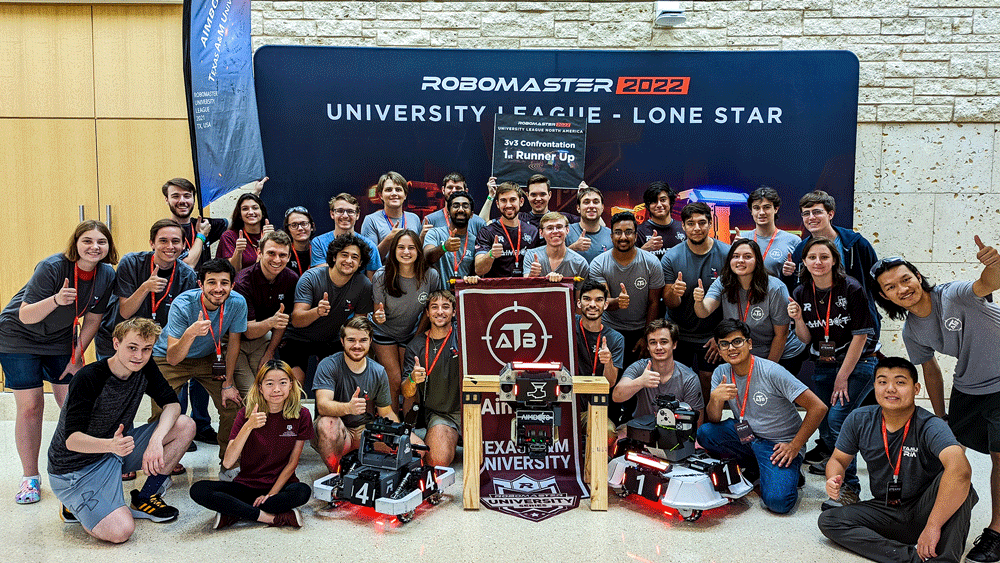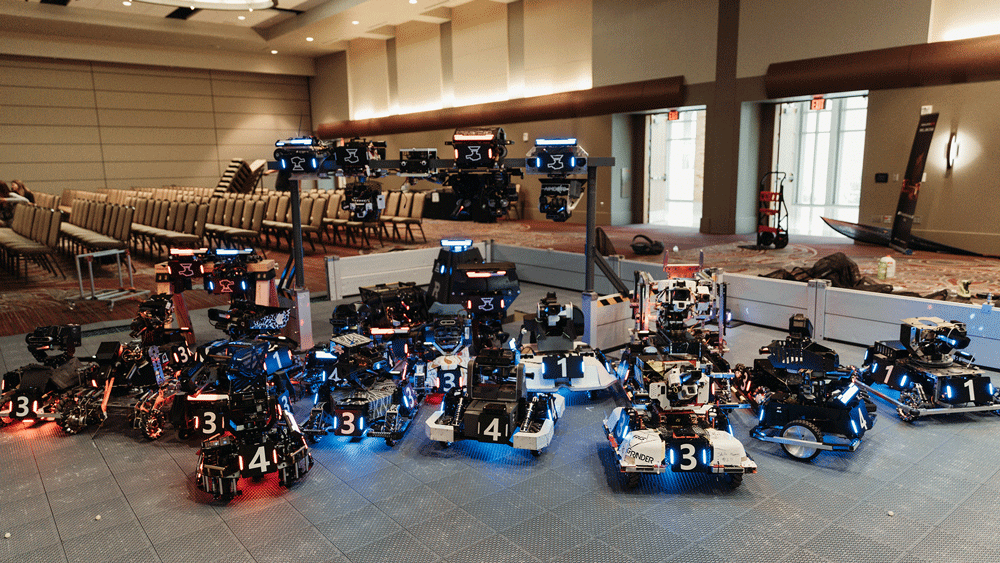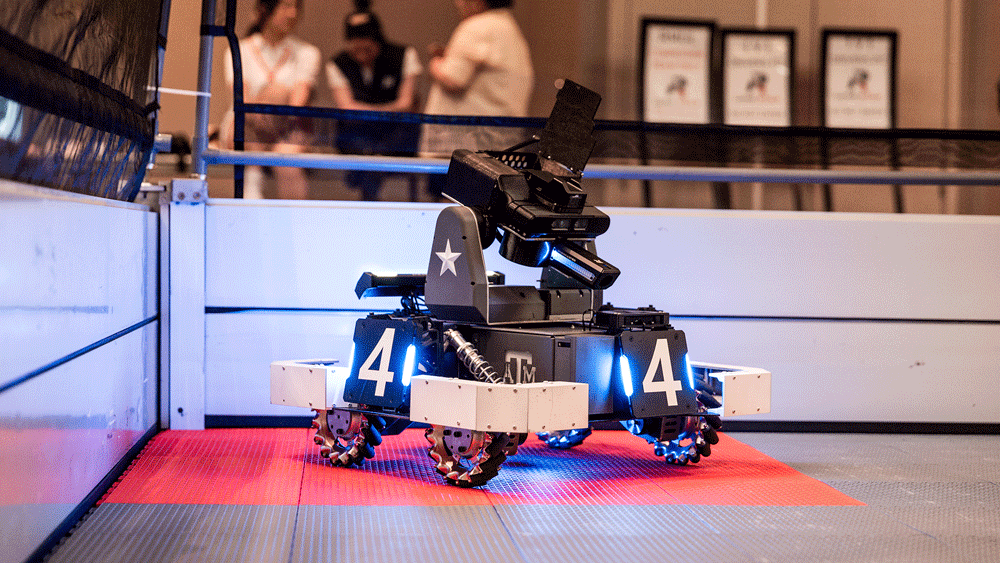
The Texas Aimbots, Texas A&M University’s premier robotics team from the TAMU RoboMaster organization, won second place in the three-versus-three main category at the annual RoboMaster North America competition. Texas A&M hosted this year’s robotics competition at the Memorial Student Center from June 25-27, 2022.
RoboMaster is a university-level robotics competition powered by DJI, a technology company, that features a student’s ability to design robots based on an extensive set of game rules while completing the engineering task of designing the robot for combat. For robots to compete effectively, they must be able to launch both paintball-sized and golf-ball-sized projectiles at enemy robots. At the same time, they also must coordinate with their teammates and manipulate field elements to gain advantages over the enemy team. Before the competition, students go through a long process of designing, manufacturing and testing their robots for competition.

Sophomore engineering student Elizabeth Crumrin, a driver for Texas A&M’s robot “The Standard” at the competition, said everything before the competition required engineering while everything after was like an “EA Sports challenge.” The drivers are not allowed to physically see the robots while they control them and are only allowed to see the competition from a first-person point-of-view through a webcam on the robot, like a video game.
The Texas Aimbots has a team dedicated to those interested in learning how to drive the robot known as the “STRATCOM Drive Team.” Crumrin reflected on the anxious feeling she had when the team was not able to test drive the robot until weeks before the competition, not allowing as much practice time as other teams may have had. Despite the late arrival of the robot, the Texas Aimbots remained undefeated until the finals, where they placed second, and the Advanced Robotics at the University of Washington placed first.

“It was a really cool experience,” said Crumrin. “The entire competition leading all the way up to the field is a complete engineering competition. It is design-focused, and we go through the entire engineering process from conceptualization, to adding up our ideas, to prototyping and even manufacturing. There is also the entire software side, which looks so difficult, and they did so much just to get the robots to move. That itself is a hard design challenge we experienced. To see all of that come together in the last month leading up to the competition was super exciting.”
Due to multiple stages of preparation for this competition, TAMU RoboMasters is filled with engineering students across all departments. Dillan Gay, junior in the J. Mike Walker ’66 Department of Mechanical Engineering, said his biggest takeaway from participating in RoboMaster North America was that implementing and executing ideas well is best accomplished with a team of people who are not afraid to rebuild and test as much as possible. For Crumrin, the teamwork and communication required to succeed in this organization and competitions have created a community of lifelong friends.